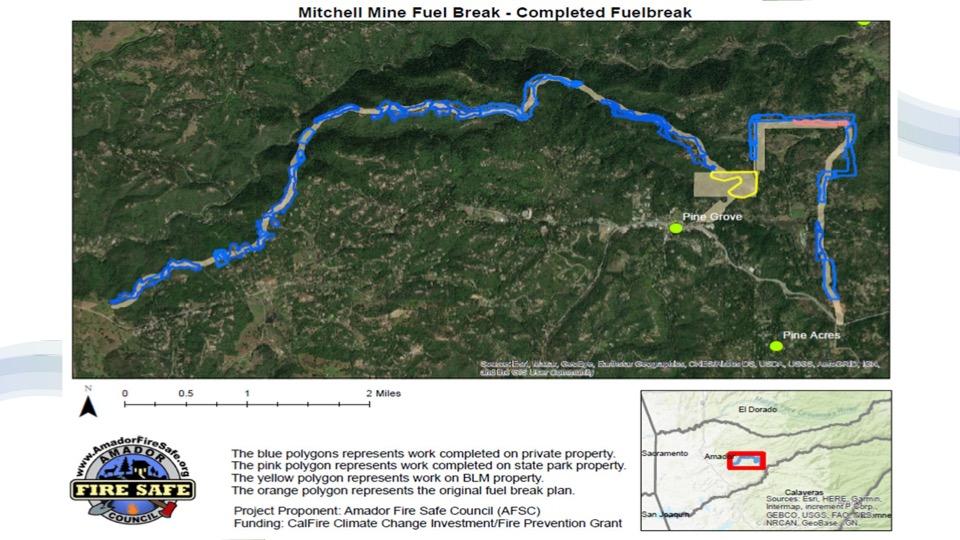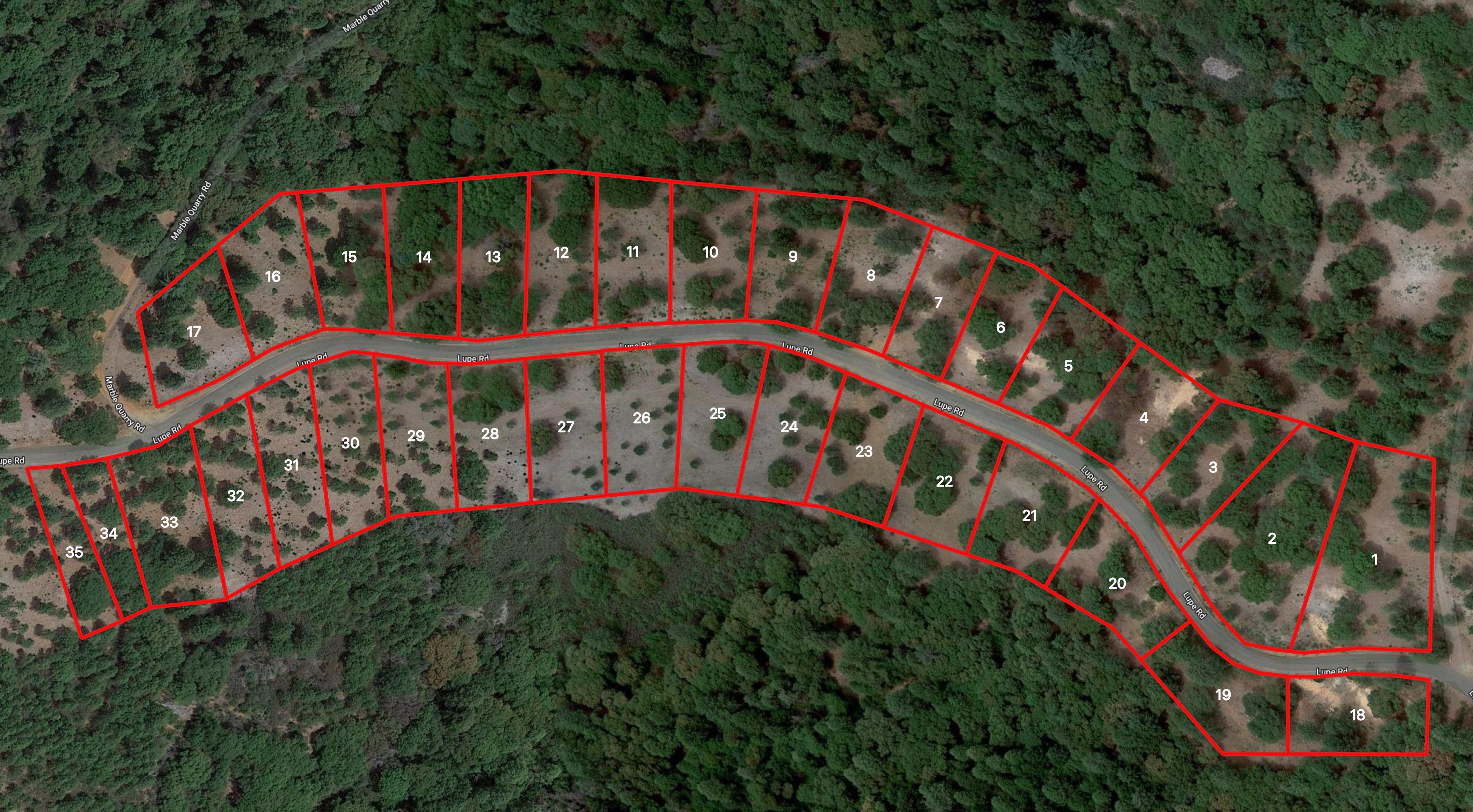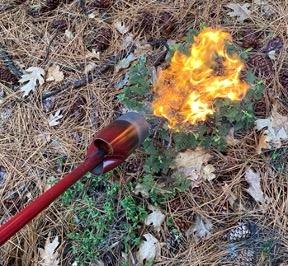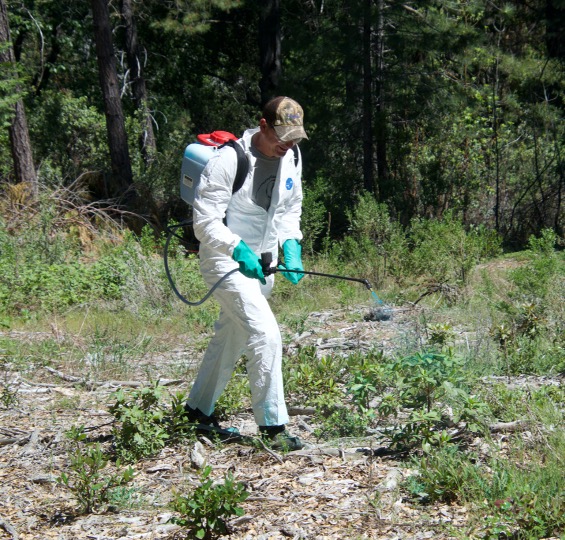Mitchell Mine Fuel Break Demonstration
History
Introduction
The Amador Fire Safe Council created the Mitchell Mine Fuel Break with Cal Fire grant funding between 2018 and 2022. It spans 10.3 miles, covers 394 acres, and was developed to help protect the community of Pine Grove from wildfire scenarios. This is a shaded fuel break, which allows the larger trees to remain, while smaller trees and shrubs are removed.

Fuel breaks require maintenance to control vegetation regrowth in the years following their initial installation. The Amador Resource Conservation District, Amador Fire Safe Council, and the University of California Cooperative Extension recognized this as a good opportunity to use a portion of the fuel break to evaluate 33 different treatment methods (listed below). This demonstration will be used to demonstrate to landowners, land managers, agencies, and the general public the most efficient and effective treatment options for managing vegetation regrowth and preserving the fuel break.
It is well known that herbicide treatments can be an effective and efficient method to remove many native and invasive plant species. Most of the guidance on the proper targeted species, however, is designed outside the area. This project allows us to assess the effectiveness of treating plants that grow in the mixed conifer belt, which poses a severe wildfire hazard to residents when not adequately thinned.
Mitchell Mine Fuel Break Demonstration
The project area includes approximately 18 acres on the Mitchell Mine fuel break. In some areas, the returning fuel that has grown since the fuel break installation has reached heights of 5 to 10 feet!
The area was divided into 35 treatment areas that were all about 0.5 acres in size.
Herbicides vary in the amount of time they require to reach full effectiveness. In some cases, that can be as long as a year. All results reported here are considered preliminary and will be updated as the demonstration proceeds.

Treatments
Untreated Control: Untreated controls are plots that are intentionally left untreated. They offer a reference to evaluate the effectiveness of the other treatments. Two untreated controls were used in this study.
Grazing: Prescribed grazing uses a multitude of animal species including cattle, goats, and sheep for consuming vegetation. Grazing can be accomplished by owning your own animals, collaborating with a neighbor with animals, or hiring a grazing contractor. Goats and sheep have an especially wide preference for many forb, shrub, and tree species and will be the species used in this project.
Flame Treatment: This treatment uses a propane flame torch and liquid propane to apply heat to undesired species without igniting the plant. Instead, swiftly passing the flame over the plant significantly raises its internal temperature, rupturing cells and causing subsequent death to the affected area. Extreme caution must be used when using this method. Only use this treatment during low wildfire hazard periods, immediately after a rain event and in accordance with safe fire practices.

Lopping: Manual vegetation removal is the least technical but also the most time-consuming method for vegetation control. While it initially delivers effective results, it's important to anticipate resprouting by certain shrub and tree species in the spring from the remaining root system. In this treatment, we utilized loppers and a mattock to remove undesired vegetation and shrub regrowth. Other tools that can be utilized as a mechanical treatment include chainsaws, clippers, brush grubbers, weed wrenches, mastication, or other equipment. Repeated treatments may be required for complete control.

Lopping and Herbicide: This method combines the initial effectiveness of manual removal with better prevention of resprouting by applying herbicide to the exposed cut stumps of the plants.
Herbicide:

Timing:
Organic:
Application:
Foliar: Foliar herbicide application involves the use of a sprayer to coat the leaves of the target plant with herbicide. Foliar treatments can be done as a spot treatment (where it is directed to an individual plant) or broadcast treatment (where it is applied at a consistent rate over the entire treatment area). Foliar treatments are often applied at application rates that range from 20-50 gallons of spray solution per acre. All foliar treatments were applied at 25 gallons to the acre with an average treatment time of 1 hour 51 minutes per acre.
Low Volume Drizzle: The drizzle application is a modified foliar application that uses a low volume/high concentration method of applying the herbicide solution to a portion of the plant. Instead of spraying the entire plant as in a foliar application, the drizzle method applies a low-volume drizzle to the plant. This technique utilizes a spray gun with an orifice disk (#02). All drizzle treatments were applied at 5 gallons per acre with an average treatment time of 25 minutes.

